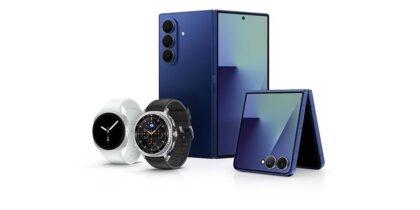With mobile phones and apps becoming increasingly critical to business operations, IT teams are under significant pressure to ensure reliable, 24/7 access to mobile services for their users. Even a 15 minute outage of mobile email due to a server issue can lead to an avalanche of IT tickets (once email starts syncing again). So, for mobile device admins, the fear and apprehension that arise upon hearing the words “firmware update” are quite understandable.
Let’s start at the base: what is firmware, and why does it need to be updated?
Firmware is the permanent software programmed into your device’s memory — in this case, a smartphone or tablet. So, essentially, it’s the backbone of the device’s operating system, hence its importance to the device and priority with which it needs to be managed.
Much like issues that can occur when shifting a workforce to a new version of Windows in the PC world, mobile firmware updates have the potential to trigger application compatibility problems across an enterprise device fleet. However, unlike Windows OS updates where IT has had tools to manage or postpone these updates, mobile admins have for the most part been at the mercy of carriers and manufacturers who push out updates over-the-air to their users.
The mobile security top 10
Download our guide to better securing the personal and work data on your mobile phone. Download Now
Imagine, for example, a large enterprise with a highly mobile workforce that is heavily reliant on a mobile resource management application for its day-to-day operations. Unknown to the IT team, a firmware update is pushed out and, one by one, users click “update” and restart their phones. Problem is, there is a conflict with their key mobile resource management application, and it starts crashing for users across their workforce. For the IT team, weekend plans are out the window.
On the other hand, IT does not want to block OS updates outright, as doing so opens up corporate devices to security risks. And, as newer devices enter use, a mixed firmware environment adds complexity to the overall management of a mobile fleet.
Providing Better Control
To address these issues, Samsung developed the Enterprise Firmware Over-The-Air (E-FOTA) service. E-FOTA gives IT managers greater firmware and OS version control by offering three key features: selective updates, forced updates and time control. Here’s a closer look at how Samsung E-FOTA works.
Not all updates are created equal, but until now, it’s been an equal-opportunity environment when it comes to allowing or blocking mobile OS updates. E-FOTA’s selective update features changes the game. Selective updates allow IT to either grant permission for a specific update or block it. Even better, it can make this determination by first performing an operating system test to validate whether the OS update will negatively impact critical applications.
Using E-FOTA, IT teams — including security, development and deployment — can test an update with a pilot group of users, typically IT-friendly end users who are willing to handle issues with their devices or applications if they should occur. Once IT has ensured critical applications can perform common tasks under the new OS update, they can then move to deploying the update on all their end users’ mobile devices.
Let IT Take Control, Instead of the User
Relying on end users to perform OS updates has never been ideal, as full compliance is unlikely. However, with E-FOTA’s forced updates, IT now has the ability to ensure critical OS updates are performed as needed. A forced update can be done over-the-air at any time by IT. This functionality doesn’t just simplify management of firmware updates and boost mobile security — it also helps ensure the complete rollout of an update, since it requires no action on the part of end users.
What’s more, in highly regulated industries such as government and finance, ensuring that all mobile devices are up-to-date with the latest OS features isn’t just a nice-to-have feature — it’s a necessity.
Timed Updates Won’t Interrupt Business
To avoid interrupting business, IT can control when a firmware update will occur on Samsung devices with the Android Nougat OS or higher. The time control function allows IT admins to select a specific window of time that will be least disruptive to business operations, such as between midnight and 4 a.m.
During that window of time, the device will first download the update in the background via either cellular or Wi-Fi and then notify the user that the update is available and that the device will shut down after a brief period of time. If the user wishes, they can force the shutdown immediately or simply let the device count down and automatically shut off.
Firmware updates can really send users and IT teams into a spiral. Learn about the best mobile security tips and why Samsung’s full suite of management tools can ease those pain points.







